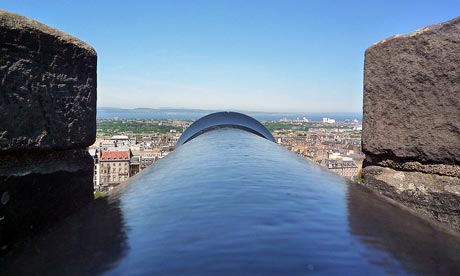
Time Out writer Keith Davidson lifts the kilt on his hometown of Edinburgh with tips on what to see, do and eat in the city year round
The word ‘capital’ was tailormade for Edinburgh. It’s been the capital of Scotland since the 15th century, but in August each year it becomes the world’s cultural capital, hosting the biggest collection of arts festivals on the planet. As a year-round tourist destination, the city also boasts a roster of enduring attractions, from the unmissable Edinburgh Castle to the 21st-century panache of the Scottish Parliament, by way of museums, galleries and dramatic green spaces such as Arthur’s Seat – a remnant of impossibly ancient volcanic activity.
As for food and drink, the restaurant scene offers everything from Michelin-starred creativity to establishments where fair-trade and organic produce is paramount. Find a pub with a good stock of whiskies, meanwhile, and there’s nowhere better to sample single malt Scotch. Compact and intense, Edinburgh provides a capital experience.
First-time visitors should start with Edinburgh Castle and a hike up Arthur’s Seat, the best way to get your bearings.
Celebrating the work of Scotland’s most famous scribes is the Writers’ Museum, housing memorabilia relating to Sir Walter Scott, Robert Burns and Robert Louis Stevenson. Slightly more unsettling curiosities can be seen at the Surgeons’ Hall Museums. The collections here allow visitors to trace the history of medicine in the city from 1505. The main attraction is the pathology collection, the largest in the UK.
St Giles is one of the city’s most iconic churches; there’s been a church on this site since AD 854. Nothing remains of the earliest structures, but the four pillars that surround the Holy Table in the centre have stood firm since around 1120.
Lovers of modern art should check out the Dean Gallery. Housed in a dramatic 1831 building that was originally an orphanage, its permanent collection features one of Britain’s largest bodies of surrealist and Dadaist art, with pieces by the likes of Dalí, Miró and Picasso. Leith-born sculptor Sir Eduardo Paolozzi is allocated a room all to himself, with a mock-up of his studio and his soaring sculpture of Vulcan.
Vegetarians will love David Bann for a quick coffee and a light snack or a full lunch or dinner. For no frills and no messing about, try Bell’s Diner (7 St Stephen Street; 0131 225 8116). It’s a small, simple room that sells fabulous burgers, good steaks and hearty desserts.
For something a touch more innovative, there’s Iglu. The ground-floor bar is pleasingly modern; upstairs is a small organic restaurant serving dishes such as wild boar burger, free-range duck salad and escalopes of wild venison.
Whisky-lovers head to the one-room Bow Bar (80 West Bow; 0131 226 7667) for one of the country’s largest ranges of single malt Scotch.Another great-value option, Frederick House has traditional, if a little chintzy, decor.
It’s easy to escape the city: in less than an hour you can find yourself in the countryside of East Lothian, hills of Midlothian, fishing villages of Fife or cosmopolitan bustle of Glasgow.
The coastal town of Musselburgh is barely 8km east of the Royal Mile, but feels much further away. It was settled by the Romans, who established a port at the mouth of the River Esk. North-east, beyond the village of Longniddry, the full picturesque roll of the East Lothian coast takes hold. The Aberlady Wildlife Sanctuary is open all year, its sandy mudflats attracting birdwatchers in autumn.
Eight kilometres on, at the heart of the pretty village of Dirleton, the remains of 13th-century Dirleton Castle top a hill surrounded by gardens. Further east is North Berwick, a traditional seaside settlement, popular with Edinburghers in summer enjoying sandy beaches and splendid rock pools. The real draw in North Berwick, however, is the Scottish Seabird Centre: watch puffins, gannets and the occasional dolphin through visitor-controlled cameras.
Along the A1 lies the royal burgh of Haddington, a well-heeled market town with historic buildings such as St Mary’s Collegiate Church. A few kilometres south is Gifford, almost too charming for words; further south are the Lammermuir Hills, popular with walkers.
The graciously curving Pentland Hills cover 89 sq km just south of the city, forming the Pentland Hills Regional Park. From here you can travel further south to reach the Iron Age fort of Castle Law Hill and explore even more Scottish ruralness. Many head to the Pentlands for hill-walking, but those who don’t fancy putting in much effort should make their way to the Glencorse Reservoir: a five-minute stroll plunges you straight into heather-covered hills – classic Scottish countryside.